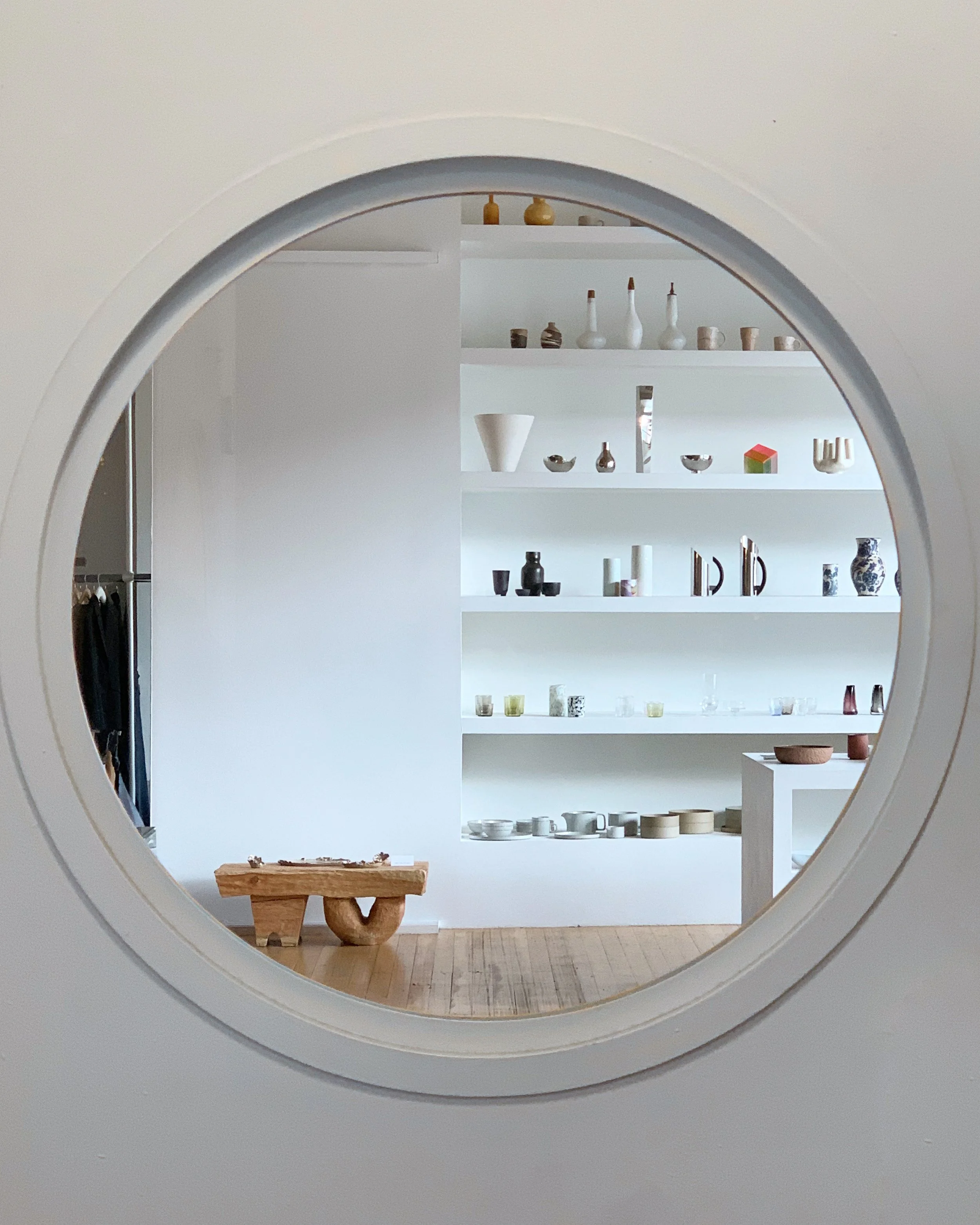Basel
Harnessing service design and technology to empower, delight, and invite self-reflection in users through a self-guided try-on experience.
My Role
Content Design
Product Design
Service Design
Videography
My Team
Jiho Kim
Annie Song
Joanne Chang
Tanushree Padath
Timeline
5 Weeks
April 26 — June 4
Project
Designing Information Experiences - IMT 565A
The Information School
How might we redesign the clothing try-on experience to balance empowerment, pleasure, and self-reflection?
As we probed this question for 5 weeks, our design process yielded several rounds of ideation and downselection informed by multi-method field research inspired by IDEO’s research methods.
My role?
I synthesized research into bite-sized, actionable findings; supported project direction by underpinning the philosophy behind our design, and spearheaded both mobile UI and content design.
Our impact
While Basel wasn’t shipped (and the only perfect score in the class doesn’t count), I created a cohesive theme around Basel’s brand identity to elevates its look and feel. I also harnessed my writing background to architect clear interactions.
Rationale
Fashion retailers often position their business within 5 tiers of the fashion landscape. Early findings indicated a unique value proposition for self-guided shopping experiences situated across Bridge and Diffusion segments. These segments would enable us to curate future-forward yet financially accessible products for a diverse customer base while giving Basel room to craft a unique, enriching brand identity.
Multi-method field investigations into Nordstrom and Reformation elicited findings from 7 participants that informed the design direction for our project.
01
Online shopping has tactile limitations, blunting delightful sensory interactions.
02
Bad fitting room conditions lead to higher returns, curbing sales and market growth.
03
Customer-employee interactions feel intrusive, challenging service design.
Design Strategy • Personae
We made two personae to guide downselection: Lydia, a customer; and Romie, a sales associate. Including both frontstage and backstage stakeholders ensured that we considered the full spectrum of service and product touchpoints.
Four design principles ensured a human-centered solution.
01
The solution will feel efficient and joyful.
02
The solution will elicit a deeper connection to the product story.
03
The solution will foster confidence through self-reflection.
04
The solution will encourage product retention.
Pulling from phenomenologists like Edmund Husserl, Maurice Merleau-Ponty, and Veronika Huta as well as an aesthetics propounded by John Dewey, we generated pleasure, empowerment, and self-reflection as key concepts to elevate Lydia’s interaction with Basel.
Pleasure
The rich sensory input from digital-physical seamlessness, feeling different clothes, and interior design.
Empowerment
The self-guided nature of the design, from the fitting room to the extent to which she engages the style curator.
Self-Reflection
The meaningful introspection and decision-making that inspires her to align to decisions throughout her journey.

Storytelling + Brand Identity
I wanted the store concept and branding to feel like an art gallery. Instead of art, the thoughtfully curated product selection and beautiful interior design would inspire sensuousness, contemplation, and serenity. Key moments throughout the concept would tell a story. Thus, we named our service after the world-famous art fair—Art Basel.
UX Writing
For microcopy, I balanced an elevated voice with simple, direct language. An elevated tone was achieved through the conditional use of the word “would”, implying a user’s preferred state (e.g., when they would like help in the fitting room). Contractions and simple language made the brand tone feel approachable and elevated.
Video: experience prototype in action.
Prototype Evaluation
Our experience design prototype included physical and digital touchpoints. An apartment lounge acted as the store check-in and fitting room. Existing props and lo-fi mockups of the appointment creation and fitting room adjustments added immersion. The prompt:
“One day, you come across a post on your friend Joho’s Instagram about Basel, a fitting room only experience. Intrigued, you decide to give Basel a try!”
What worked:
Self-directed experience
Magic closet feature
Room for improvement:
Walk-out checkout experience
Adding potential human interaction
Implications:
Abandon the walk-out checkout experience and incorporate human interaction elements through style curators.
Final Prototype
Try-on Feature
Product
Moved the Add (+) piece for try-on into the Try-On screen.
Add vertical spacing between listings to let the eye breathe.
Content
Changed the language from Bag to Try to confer action and bridge the gulf of execution.
Creating an Appointment
Product
Replaced the Apple Pay checkout flow with basic customer information (Name and Email).
Content
Used collective brand voice “we” to engage the user in the meaningful exchange.
Sculpted language to balance conversational tone with a preferred state to feel high touch but approachable.
Self-guided Fitting Room
Product
Reorganized content hierarchy prioritizing customer needs.
Removed the fitting room self-checkout feature to promote human interaction.
Added new features based on user needs: temperature adjustment, default options for music and lighting selection.
Content
Used the first-person perspective to confer a sense of personal agency.
Punctuation for excitement.
Style Curator
Service
Implemented an in-store style curator to empower users to seek one-one-one help should they want it.
Pictured: Style curator assisting customer with a fragrance to complement her aesthetic.
Impact
While Basel was never implemented, my team drafted a lean canvas outlining our business strategy and key metrics we would measure to evaluate success.
Financial Metrics
Revenue, gross profit margin, sales growth, ROI
Operational Metrics
Inventory turnover, return rate
Customer Sucess Metrics
Customer Satisfaction ( reviews/surveys), social media engagement and growth (follows, comments, likes, shares)
Our Next Steps?
Do a second round of the testing to determine the design’s Desirability, Feasibility, Viability. In the meantime, we’ll take this glowing feedback from our professor:
“No project is ever perfect, but this one gets darned close. Bravo!”
— Dr. Jacob Wobbrock (Professor)
Reflections
01
Human touch and meaningful interactions are still key to engaging shopping experiences.
02
Even brief field observations and user testing provide valuable real-world insights.
03
Better experiences prioritize a multidisciplinary, holistic approach over stagnant frameworks.
Me and my wonderful team.
💞



